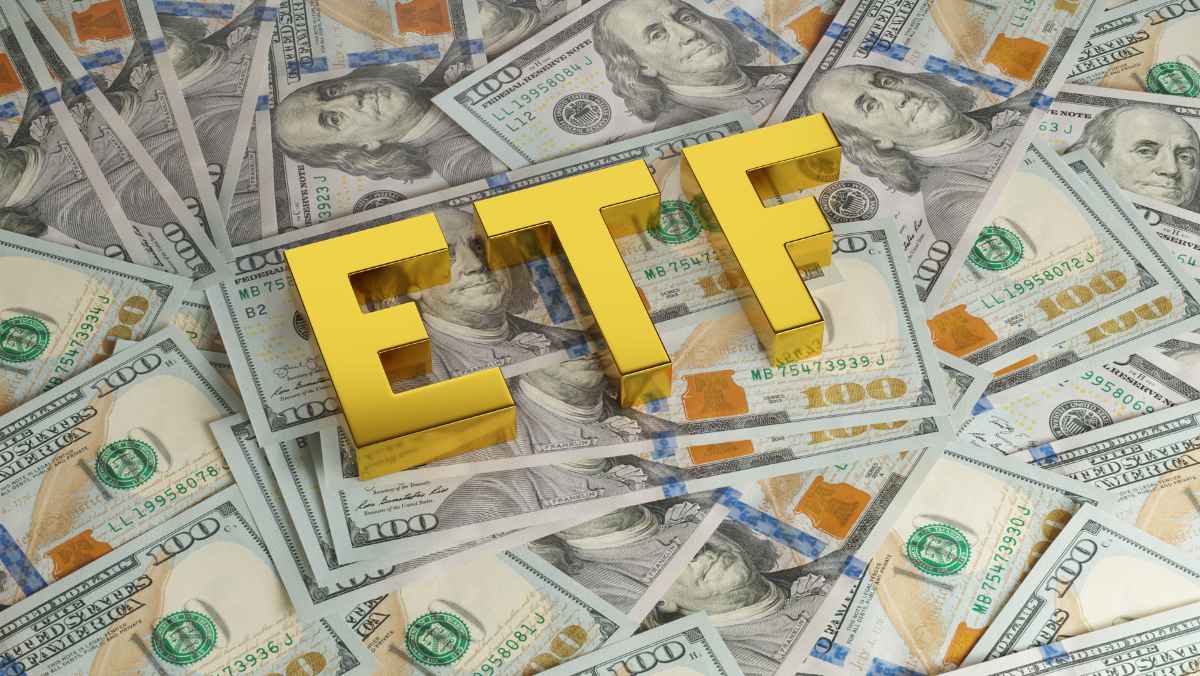Friday Dec 15 2023 06:34

12 min

Embarking on the investment journey often feels like charting unknown waters.
Building an investment portfolio can feel the same way, especially when faced with the multitude of options available in today's market.
For many investors, the challenge isn't just about picking the right stocks or bonds but constructing a balanced, diversified portfolio that can weather market volatility and provide consistent returns.
Exchange Traded Funds (ETFs) offer a solution; these powerful instruments have revolutionized the way we approach diversification.
In this article, I'll guide you through the nuances of crafting a diversified portfolio using ETFs, ensuring you're well-equipped to make informed decisions and enjoy a balanced financial feast.

An Exchange Traded Fund (ETF) is a type of investment fund that holds a collection of assets, such as stocks, bonds, or commodities and trades on stock exchanges much like individual stocks.
It offers a way for investors to buy a broad portfolio of assets without having to purchase each one individually.
Unlike traditional mutual funds which are priced at the end of the trading day, ETFs can be bought and sold throughout the trading day at fluctuating prices. This gives investors the ability to execute strategies like intraday trading or using stop-limit orders.
ETFs are unique in their level of transparency. Most ETFs publish their holdings daily, allowing investors to see exactly what assets are held within the fund. This transparency can be vital for informed decision-making.
ETFs provide investors with the tools they need to achieve diversified portfolios, tap into specific markets, and execute flexible trading strategies.
Diversifying your investments is akin to not placing all your eggs in one basket. The primary aim is to spread the risk and potential reward over a range of assets. With the rise of Exchange Traded Funds (ETFs), achieving this diversification has become more accessible and efficient.
But how exactly can one leverage ETFs to craft a robust and diversified portfolio? Let's read into the four pivotal strategies.
Your portfolio should mirror your life goals and financial ambitions. Whether you're saving for retirement, a child's college fund, or any other milestone, it's essential to determine the ideal allocation.
This requires assessing factors such as your risk tolerance, time horizon, and income needs. For instance, if regular income is paramount, consider integrating fixed-income ETFs or equity ETFs renowned for higher dividends. Always ensure your portfolio resonates with your broader investment strategy, tax considerations, and personal circumstances.
Having set your allocation goals, the next step is strategic implementation. With an array of ETFs at your disposal, it's crucial to identify those that align with your objectives. However, diving in all at once isn't advisable.
Timing is key. Avoid purchasing all your desired ETFs in a single day. Instead, observe the market trends, look for buying opportunities during dips, and stagger your purchases over several months, ensuring you capitalize on favourable conditions.
While it's common to have a home bias in investing, don't shy away from international ETFs. Global diversification can potentially offer a buffer against regional economic downturns.
By incorporating ETFs that focus on emerging markets, established international markets, or even specific sectors abroad, you can add another layer of diversification to your portfolio, tapping into growth opportunities beyond your home country.
A set-it-and-forget-it approach doesn't bode well in the dynamic world of investing. Regularly monitoring your portfolio is indispensable. Ideally, undertake this exercise once a year, aligning it with moments that make sense for your fiscal situation, like the start or close of a calendar year. Benchmark each ETF's performance against its respective index to ensure you're on track with your investment goals.
Investing in the world of Exchange Traded Funds (ETFs) has become a go-to strategy for modern investors, and with good reason.
ETFs offer distinct advantages that can cater to both the novice and the seasoned trader. Let's unpack the compelling benefits of integrating ETFs into your investment strategy.
One of the standout features of ETFs is their ability to provide instant diversification. By holding a collection of assets such as stocks, bonds, or commodities, a single ETF can give investors exposure to a whole sector or market, reducing the risk associated with individual assets.
ETFs stand out for their trading dynamics. They can be bought and sold during trading hours just like individual stocks. This flexibility allows for strategies like intraday trading, making them a favourite among active traders.
Often, ETFs come with lower expense ratios compared to traditional mutual funds. This cost-effectiveness makes them an attractive choice for investors conscious of fees eating into their returns.
Another advantage that sets ETFs apart is their commitment to transparency. Most ETFs regularly disclose their holdings, granting investors a clear view of what assets lie within, and aiding in informed decision-making.
ETFs have a unique structure that can lead to potential tax advantages. Due to their "in-kind" creation and redemption process, they might generate fewer capital gains distributions, potentially reducing the tax bite for investors.

Exchange Traded Funds (ETFs) have carved a niche for themselves, offering a blend of diversification, cost-efficiency, and flexibility.
However, with thousands of ETFs available in the market, how does one go about selecting the right ones? Making an informed choice requires a strategic approach, taking into consideration various factors that align with your investment goals.
Before diving into the ocean of ETFs, it's imperative to have clarity on your investment objectives. Are you looking for growth, income, protection against inflation, or a mix of these? Knowing what you want will guide your search.
For instance, if income is a priority, ETFs focusing on dividend-paying stocks or bonds may be suitable. Conversely, for growth, sector-specific ETFs or those targeting emerging markets might be more apt.
Diversification isn’t just about having different assets; it’s about ensuring those assets aren’t correlated. While one ETF might offer exposure to the technology sector, another might focus on commodities or international markets.
By selecting ETFs that provide exposure to different sectors and regions, you can create a portfolio that is less susceptible to market volatility in any single area.
Cost is a crucial factor that can impact your overall returns. Two primary expenses to consider are the ETF's expense ratio and trading fees. The expense ratio is a yearly fee expressed as a percentage of average assets managed.
While ETFs generally have lower expense ratios than mutual funds, they can vary among different ETFs. Always compare expense ratios of similar ETFs before making a choice.
Trading fees are costs associated with buying and selling the ETF. While many online brokers now offer commission-free ETF trades, it's still essential to be aware of any potential trading costs.
Every ETF is designed to track a specific index, be it broad-based like the S&P 500 or more niche, such as a specific sector or theme. Understanding the index your ETF tracks gives you insight into its potential performance and risks.
Additionally, consider the tracking error. This metric indicates how closely the ETF follows its underlying index. A smaller tracking error suggests the ETF does a good job mimicking its index, while a larger one might indicate discrepancies.
Liquidity refers to how easily assets can be bought or sold without causing significant price changes. Highly liquid ETFs typically have narrower bid-ask spreads, reducing the cost of entering and exiting positions. Before investing, check the average trading volume of the ETF. Higher trading volumes often indicate better liquidity.
For investors focused on income, the ETF's dividend yield and its distribution policy become pertinent. Some ETFs might reinvest dividends, while others distribute them to shareholders. Understanding this can help you align your choice with your cash flow requirements.
It’s essential to dig deeper than just the ETF name. Sometimes, the name might suggest exposure to a particular sector or theme, but the actual holdings might tell a different story. Always examine the ETF's fact sheet or prospectus to get a comprehensive understanding of its investments.
Building a diverse portfolio with ETFs stands as a testament to the modern investor's ingenuity and adaptability. From understanding the foundational concepts of ETFs to selecting the right ones tailored to your financial aspirations, this journey is filled with informed decisions and strategic manoeuvres.
For those who are still on the fence or feel overwhelmed, it's essential to take things one step at a time. Begin with solidifying your understanding, strategize diversification, recognize the benefits, and then proceed with choosing the right ETFs.
Ready to start your investment journey with ETFs? Markets.com, a leading CFD trading platform, is here to guide you.
If you're new to trading, they offer an extensive range of educational resources—from beginner guides to expert-led webinars.
Discover the benefits of trading with markets.com today.
“When considering ETFs for trading and price predictions, remember that trading CFDs involves a significant degree of risk and could result in capital loss. Past performance is not indicative of any future results. This information is provided for informative purposes only and should not be construed to be investment advice.”